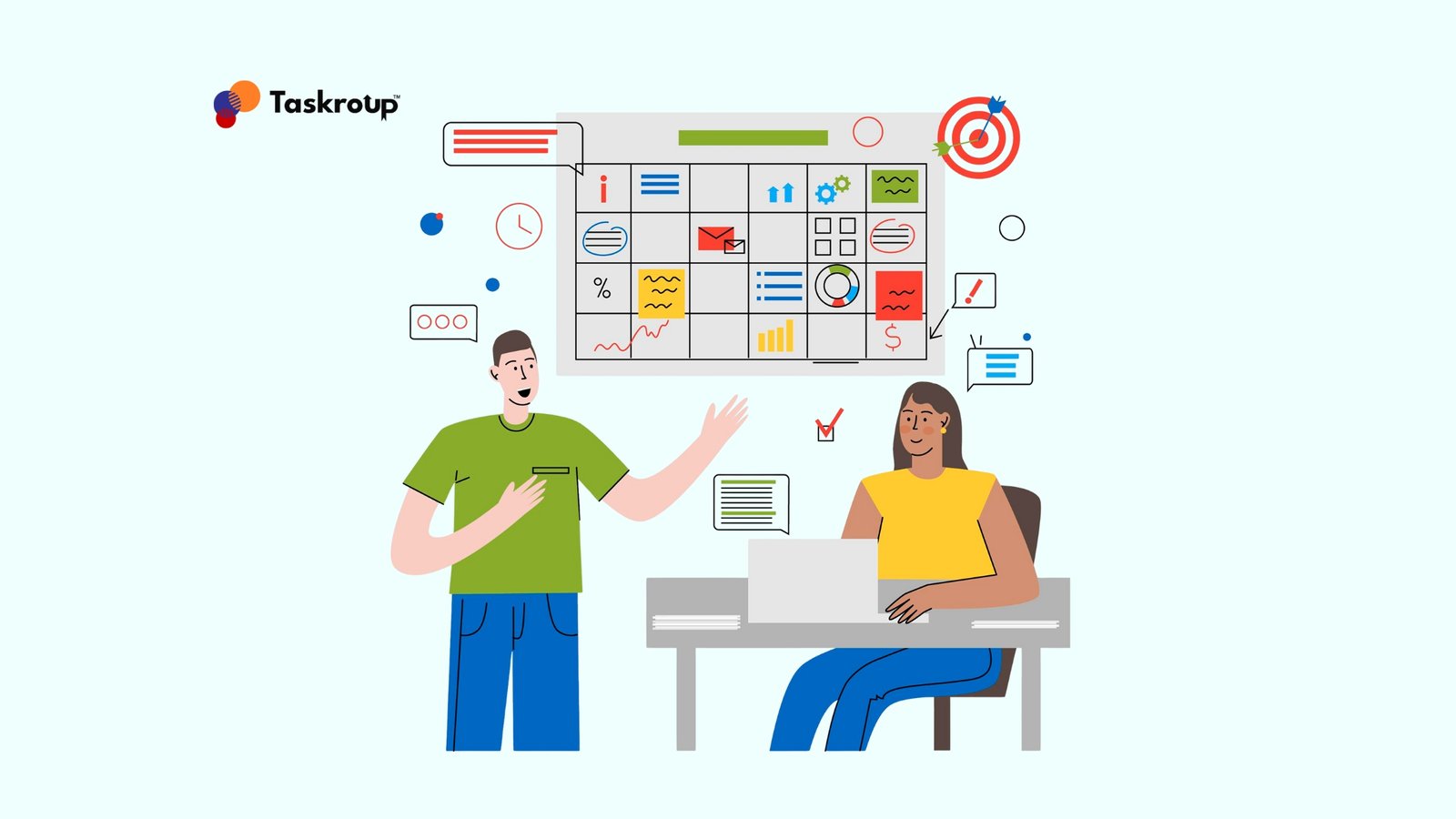Physical Address
304 North Cardinal St.
Dorchester Center, MA 02124
Physical Address
304 North Cardinal St.
Dorchester Center, MA 02124

Effectively managing several activities is now essential in today’s intense work environment. Whether you’re overseeing a small team or managing enterprise-scale operations, the ability to prioritize your workload strategically can significantly impact your overall productivity and business outcomes.
This software is more than just a digital calendar or to-do list; it’s a comprehensive tool designed to help teams assign, organize, and execute tasks with maximum efficiency. From shift planning to progress tracking, it helps businesses of all sizes streamline processes, align efforts, and deliver results faster.
In this blog post, we’ll walk you through how to prioritize work using Taskroup, its benefits, and actionable tips to optimize your task flow.
Businesses are increasingly shifting to digital tools to replace outdated manual systems. Scheduling software automates the assignment of tasks, logs attendance, monitors resource allocation, and even helps manage leaves and holidays.
With real-time data insights, you can also avoid task duplication, detect workload imbalances, and anticipate project delays. According to recent market projections, the global demand for such solutions is steadily growing, underlining the urgent need for digital-first planning in modern businesses.
Tools like Taskroup come with mobile support and cloud integrations making them ideal for both on-site and remote teams.
When you know what to work on next, you’re less likely to waste time deciding between tasks. Prioritization helps individuals focus on high-impact items, avoiding the constant switching that leads to reduced concentration and energy drain.
It also allows teams to collaborate more effectively, knowing exactly what comes next and what truly matters.
A long, unstructured to-do list is a common source of workplace stress. But with tasks categorized by urgency and importance, employees feel more in control. This reduces anxiety and leads to better morale across the organization.
Understanding the weight and urgency of tasks can lead to smarter resource allocation and time management. Businesses that prioritize projects properly can respond faster to opportunities and threats.
Before anything else, compile a comprehensive list of tasks or projects that need attention. Include deadlines, resource requirements, and dependencies. A full overview is essential before making decisions on what should come first.
With Taskroup, this list can be shared and updated in real-time, ensuring everyone is aligned.
Differentiate between “urgent” and “important” work. Tasks with the highest impact on business objectives should be completed first, even if they aren’t immediately due.
This approach prevents teams from getting stuck in a loop of low-value, high-urgency work that adds little strategic value.
When setting task deadlines, consider the complexity and available resources.
Tools like Taskroup help estimate time requirements based on historical data, allowing for better time forecasting and smoother execution.
The right person for the right task makes all the difference. When prioritizing work, it’s critical to assign tasks based on team members’ strengths, availability, and capacity.
Taskroup lets you view real-time workload distribution, helping you make smarter assignments.
No schedule is perfect. Priorities often shift due to external factors like client feedback, team availability, or unexpected challenges.
A flexible tool like Taskroup allows you to reorder priorities without disrupting workflows, so your team stays focused and adaptable.
Once tasks are in motion, monitor their progress and performance. If something is off track, address it early. Look at completion rates, missed deadlines, or bottlenecks to assess how effective your prioritization plan is.
Taskroup’s built-in analytics dashboards provide the visibility you need to make informed decisions.
Using Taskroup, businesses can gain a comprehensive overview of tasks, projects, and employee performance in one platform. Here’s how it aids project prioritization:
✅ Clear Task Hierarchies
Sort your task list by importance, urgency, or deadline. You can assign labels like “Critical,” “High,” or “Low,” so team members know where to focus.
✅ Time Estimation Features
Estimate how long each task should take and set realistic expectations. This helps avoid overloading staff or underestimating work hours.
✅ Resource Planning
Determine which workers are overworked, then redistribute tasks appropriately. With drag-and-drop capabilities, planning is intuitive and fast.
✅ Live Tracking
Stay updated with real-time task statuses. From “Not Started” to “Completed,” know exactly where each project stands.
✅ Historical Data Reports
Use past project data to guide future decisions. Understand what took longer than expected or which areas consumed the most resources.
When teams work on the right tasks at the right time, the result is higher output with fewer delays. Organizations that successfully implement prioritization tools can:
All of this translates to stronger performance, happier clients, and more profitable outcomes.
If managing tasks and shifting priorities are taking a toll on your business performance, now is the time to act. Project prioritization software like Taskroup helps businesses assign, manage, and complete tasks based on strategic goals not just urgency.
Whether you’re a startup scaling up or an established business fine-tuning its operations, Taskroup brings the structure and agility your team needs to succeed.